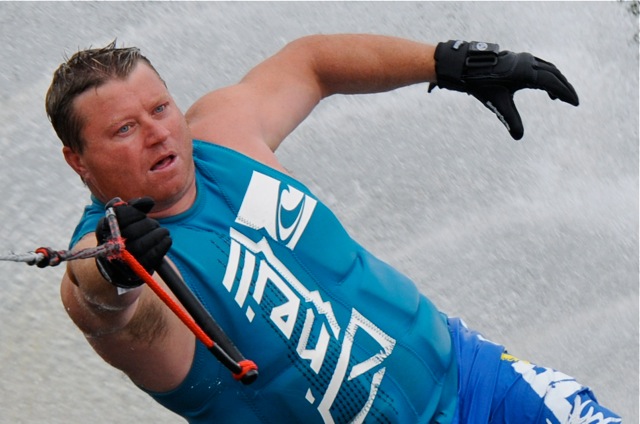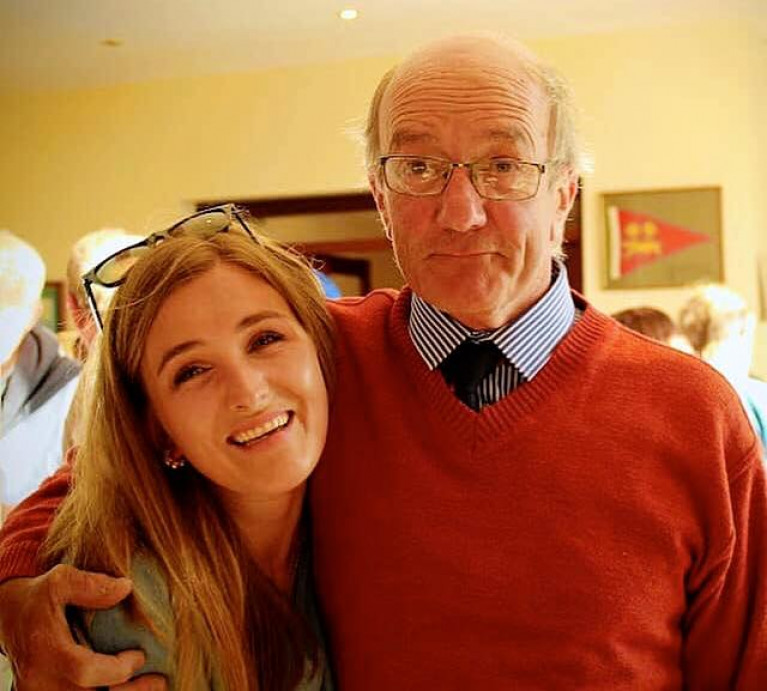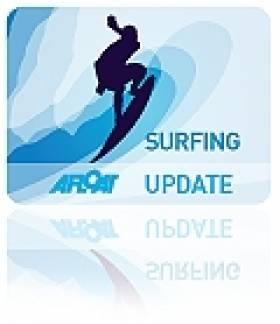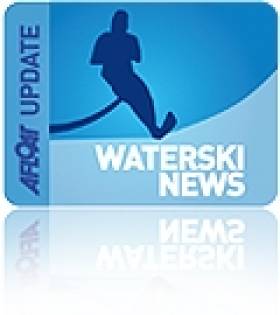Displaying items by tag: Waterski
Dublin waterskier Des Burke Kennedy has been selected as the first-ever Irish inductee into the International Waterski & Wakeboard Federation's Hall of Fame.
With over 90 Federations and an estimated 60 million participants, it's a considerable honour for the well-known commentator in the world of waterskiing.
Burke Kennedy's love for sport led to him becoming well known in Waterskiing, representing Ireland at all the major meetings of IWWF and Europe. He became a commentator in the sport and was invited to commentate at most of the major waterski & wakeboard events around the world. The World Body's Hall of Fame citation says 'his Irish lilting voice has been a favourite for many a year'.
Burke Kennedy was one of the founder members of the IWWF Waterski & Wakeboard World Cup Committee and has been involved from 2002-2017. He served 18 years as President of the Irish Waterski & Wakeboard Federation, 15 years as IWWF Chairman of the World Marketing & Media Committee, Founder member of the IWWF Waterski & Wakeboard World Cup, and 15 years as organiser of TV shows & voice-overs on approximately 15 World Cup TV Shows.
Read the full citation here
Water-Skiing Makes You Young!
Water-skiing is just about the only waterborne activity for which the Afloat.ie style-book permits the use of exclamation marks (or screamers as we call them in the trade, and there are much rougher words with crude canine associations, but we won’t go there now). However, here’s a little screamer-worth story we came across in putting together tomorrow’s Sailing on Saturday, which is about how the great and long-established Irish sailing organisations such as Dublin Bay Sailing Club the Shannon One Design Association have proven to be towers of strength in helping Irish sailing get a meaningful season in this pandemic-plagued year. The top photo shows SODA Hon Sec Naomi Algeo and the old fellow in pre-covid proximity at the LRYC Regatta Week in 2019. The lower photo – which you’ve seen before – was taken ten days ago as the formerly old guy is transformed into a stylishly-dressed athletic youth as he celebrates the successful completion of the Lough Ree YC 250h Anniversary Regatta with a spot of water-skiing - as one does.
 We’ve just had a great LRYC Quarter Millennial Regatta Week! The rejuvenated Alan Algeo celebrates in style. Photo: Naomi Algeo
We’ve just had a great LRYC Quarter Millennial Regatta Week! The rejuvenated Alan Algeo celebrates in style. Photo: Naomi Algeo
20 Countries (including IRL) for Wakeboard World Cup
Founded by a representative of the Sultan of Brunei in 1827, Kuching City is the largest on the exotic island of Borneo. Ireland is in the line up with Sian Hurst and David O'Caoimh. This tropical location, with the support of the Sarawak State Government represented by the Ministry of Tourism and Heritage, Sarawak, will host this 31st World Cup Stop of the International Waterski & Wakeboard Federation (IWWF) and Waterski & Wakeboard World Cup Sdn.Bhd. Initial event details were released at a Press Conference last January in Kuching and all preparations have now been completed.
The IWWF World Cup Series was established to bring the very best Waterski and Wakeboard athletes to important high population centres around the world. To date these have included London, Paris, Alexandria, Moscow, Beijing, Singapore, Doha, Liuzhou, Chuncheon, Putrajaya, and many others. Following this Kuching Wakeboard World Cup Stop, it will move on to Linyi in China.
This Stop will include Wakeboard and the Stars of Florida, a spectacular Show Ski Team from Florida, USA. They will join the Malaysia Day Celebrations in a water parade on the Sarawak River on the night of September 16th which will culminate with riverside fireworks displays.
Not only has this Kuching World Cup Stop been scheduled to coincide with the Malaysia Day celebrations, it will also form part of the birthday celebrations of the Governor TYT Yang Di-Pertua Negeri Sarawak. For the first time it will also be staged in conjunction with the historic 2011 Sarawak Regatta right in the centre of Kuching City. Dating back to 1872, the Regatta attracts an enormous variety of colourful boats including Dragon Boats, Long Boats, etc. During the four days involved, over 100,000 spectators are expected, plus 400 boats 6,000 paddlers - and of course the very best World Cup Wakeboard Riders from 20 countries. The unique combination promises to make this one of the most spectacular World Cup Stops to date.
The special MasterCraft X2 Wakeboard competition boat has already arrived in the Port of Kuching and will play its vital part throughout the World Cup Stop on the Sarawak River.
For those not fortunate enough to be able to attend the 2011 celebrations in Kuching, they will nevertheless be able to enjoy both a FREE STREAM live Webcast from the waterfront and also replays after the event. The time zone is GMT + 8 hours. The Webcast Links are as follows :
LIVE :
http://247.tv/waterski/freestream/2011-sarawak-wakeboard-world-cup/
LIVE REPLAYS :
http://247.tv/waterski/2011-sarawak-wakeboard-world-cup/
Following this Kuching World Cup Stop, the IWWF will distribute an edited TV highlights show to over 500 million viewers and Media Releases to 192 countries. Both Kuching City and this 31st World Cup Stop on September 15/18 will give a great insight to both the special attractions of Sarawak and the extraordinary skills of the World Cup Riders.
The local times of the Wakeboard World Cup programme are as follows :
(GMT+8hrs) :
September 16th - FRIDAY
07.30 - 11.30hrs
Wakeboard - Practice & Semi-Finals
September 17th - SATURDAY
08.00 - 11.30HRS
Wakeboard - Sarawak Youths / Men Quarter Finals / Women LCQ
15.30 - 16.30hrs
Wakeboard - Men LCQ
17.00 - 17.45hrs
Stars of Florida Ski Show
September 18th - SUNDAY
09.00 - 10.00hrs
Wakeboard - Men Semi-Finals
10.00 - 11.00hrs
Wakeboard - Women Finals
11.00 - 11.45hrs
Stars of Florida Ski Show
12.00 - 13.00hrs
Wakeboard - Men Finals
15.000 - 15.45hrs
Stars of Florida Ski Show
16.00 - 17.00hrs
Medals Presentation on sit
Gold Medal for Ireland's Disabled Waterski Champion
The Disabled World Waterski Championships attracted 38 of the World's top athletes from Australia, Brazil, Canada, France, Great Britain, Italy, Mexico, Netherlands, Norway, Republic of South Africa, Sweden, USA – and Ireland.
These World Championships included Slalom, Tricks and Jump. The most coveted award is for the Overall title, the triathlon of Waterskiing. This involves competing in all three events and outscoring all others in the combined calculations.

Success for Eamonn stateside. Photo: Des Burke Kennedy
In both Slalom and Tricks, Eamonn Prunty took the Bronze Medal. Finally, in Jump he took 5th place. When all the sores were totaled, his 2670 Overall points were 49 ahead of his nearest rival, Darryl Hoyle of Australia, who was hotly tipped to take the World Overall title this year. Although Hoyle broke the World Jump record, his combined scores still could not beat Eamonn Prunty. Joe Rae of USA took the Overall Bronze medal. This was the second time that Prunty has succeeded in taking the World Overall Gold Medal, a feat never equaled.
Des Burke-Kennedy, President of the Irish Waterski & Wakeboard Federation stated " This was a very well deserved victory for the enormous talents of Ireland's Eamonn Prunty and taking the gold medal at the World Championships for the second time is almost impossible – but Eamonn is no stranger to doing the impossible"
World Champion Eamonn Prunty trains at the family owned Irish Aqua Sports Centre in Summerhill, Meath,a short distance west of Blanchardstown. The man-made lake is widely regarded as one of the most perfect Waterski and Wakeboard training Centres in Europe. Having a two-time World Gold Medalist on site will certainly focus the international spotlight on this impressive facility. The Website is at : http://www.wakeboardingwaterskiing.com
History Made Yet Again At Irish Waterski Championships
The 2010 Nationals made history for several reasons. The host Club, County Down's Lough Aghery Waterski Club were relieved to have great water conditions and some sunshine for the weekend. All were delighted to see both Jack and Janet Maxwell in the spectators area again as they have not missed a Nationals for 27 years !

Barry Galvin of Cork in action. Photo: Des Burke-Kennedy
The two outstanding achievements on the water also involved big numbers. On arrival, Barry Galvin of Cork Power Boat & Waterski Club must have wondered if he was hoping for too much to take his 24th consecutive National Overall Waterski title - a feat never achieved anywhere in the world. To do this, his combined scores in Slalom, Tricks and Jump, had to beat all other contenders. As it turned out, he somehow outpointed all athletes once again. This was an outstanding achievement. His 24th consecutive Overall title is certainly Guinness Book of Records stuff !
The second outstanding achievement was that of Rodney Watson of Meteor Waterski Club, another Belfast neighbour. As National Slalom Record Holder, he was last on the water and this is not a position he enjoys. That extra pressure to beat all other scores can sometimes get to him ! The seven who qualified for the Finals did not make it easy for him. Both Jody Waterworth of Lough Aghery WSC and Barry Galvin of Cork PB&WSC had alerady secured scores on the short 13m Slalom line. As it is 11.5m from the MasterCraft Boat pole to each of the six Slalom buoys, that 13m shortening only allows 1.5m to play with. Each Slalom Skier at this rope shortening will cross the wakes at over 70kph and that requires perfect timing and enormous skill. He had to get beyond 4.5 Buoys on that 13m line to take the 2010 Slalom Title. Not only did Rodney Watson get on to that 13m line, but he cleared the entire pass and then went on further to secure a score of 4 Buoys on the even shorter 12m line. With just 0.5m to play with, the applause as he returned to the Dock to take his 10th National Slalom title was fully deserved. Congratulations Rodney Watson.
At the other end of the scale, the two young Galvin brothers, Daniel and Barry T, showed that they are certainly going to follow in their father's footsteps. Between them, they took all the U12 and U14 Slalom, Tricks and Jump titles this year. In fact, Barry T even outperformed all the "grown ups" in the Tricks event with a score of 4280 points. He has been coached in recenet years by the World Record Holder Nicolas LeForestier of France and Nicolas is returning to him again in August for more intensive training. That coaching investment is certainly paying off.
































































